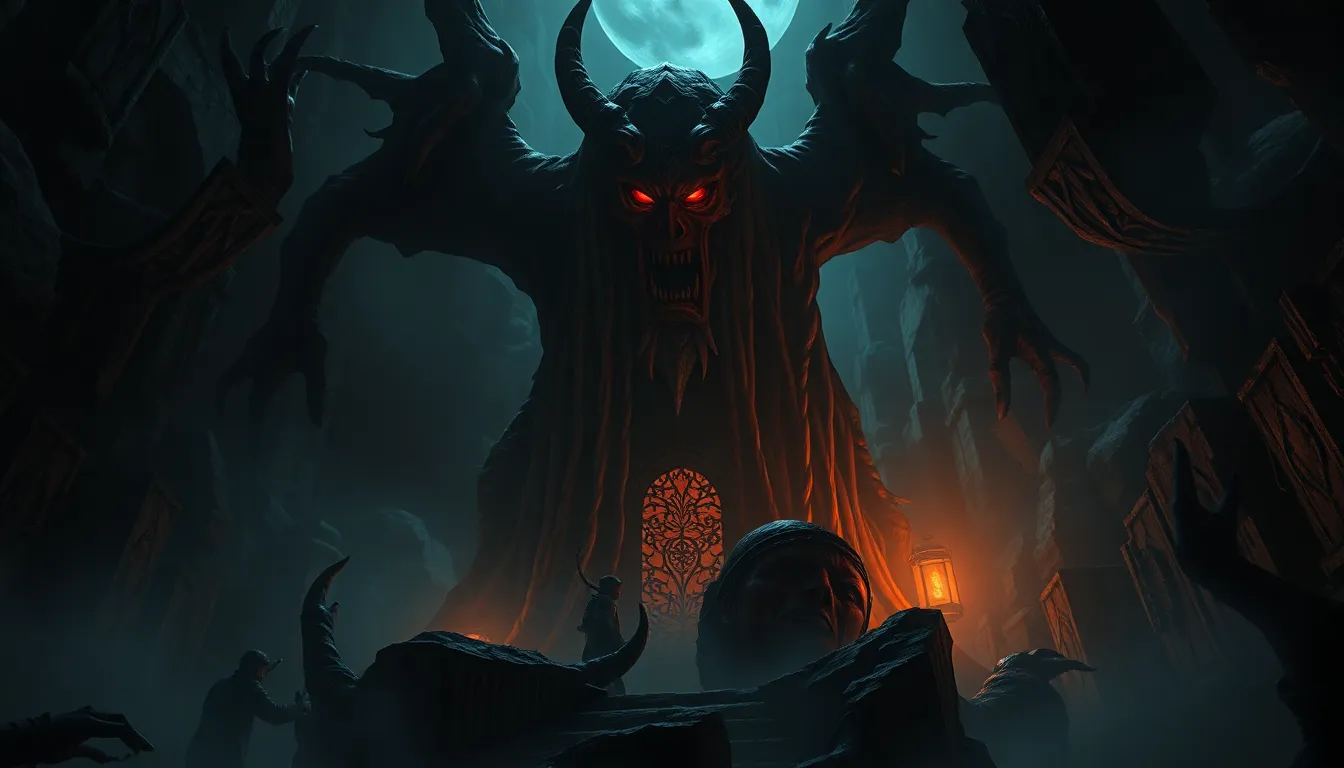From the Void to Vibrancy: The Most Colorful Creation Myths
I. Introduction
Creation myths serve as foundational narratives that explain the origins of the universe, humanity, and the natural world. These stories are not only significant for their cultural and religious meanings but also for their rich symbolism and vivid imagery. One of the fascinating aspects of these myths is the use of color symbolism, which can convey deeper themes and emotions.
The purpose of this article is to explore vibrant creation myths from various cultures, highlighting how they transition from the concept of a void to a world filled with color and life. By examining these narratives, we can gain insight into how different societies perceive creation and the vital role that colors play in their storytelling.
II. The Void: Understanding the Concept of Nothingness
The void, often defined as a state of emptiness or non-existence, holds significant meaning across various cultures. In many creation myths, the void is depicted as a primordial state from which all things emerge. This concept often serves as the backdrop against which the act of creation takes place.
- Definition and significance: The void symbolizes potential and the unknown, a canvas for the cosmos to be painted upon.
- Psychological perspectives: Philosophers and psychologists have explored nothingness as a concept that reflects human existence and consciousness.
- The role of the void: In many myths, the void precedes creation, emphasizing the transition from nothing to something, from chaos to order.
III. The Role of Color in Mythical Narratives
Color plays a crucial role in mythical narratives, often symbolizing various attributes and themes. Colors can evoke emotions, represent deities, and signify different aspects of creation.
- Symbolism of colors: Each color carries specific meanings; for instance, red may symbolize life and vitality, while blue could represent tranquility and depth.
- Conveying themes and emotions: The use of color can enhance storytelling, allowing for a more profound engagement with the narrative’s emotional landscape.
- Examples of cultures emphasizing color: Many indigenous cultures, such as the Navajo and Maori, incorporate vibrant colors into their creation stories, reflecting their worldview.
IV. The Enuma Elish: Babylonian Creation in Splendor
The Enuma Elish is a Babylonian creation myth that unfolds the story of the universe’s origins through the interplay of gods and primordial chaos. The narrative begins with the mingling of freshwater and saltwater, personified by the gods Apsu and Tiamat.
In this myth, water is a central element, symbolizing both chaos and fertility. The vibrant imagery of the narrative includes:
- Chaos and order: The clash between Tiamat, representing chaos, and Marduk, the hero god who brings order.
- Creation from the body of a goddess: Marduk defeats Tiamat and uses her body to create the heavens and the earth, illustrating a transformation from chaos to a structured universe.
- Symbolism of colors: The Enuma Elish uses vivid descriptions, such as the blue of the sky and the green of the earth, to evoke the beauty and complexity of creation.
V. The Popol Vuh: The Colorful Creation of the Maya
The Popol Vuh is the sacred text of the Maya, detailing their creation myth and the adventures of their gods. This narrative is rich in symbolism and emphasizes the vibrant materials used in the creation of humanity.
The creation of humanity unfolds through several attempts, highlighting the importance of color and texture:
- Creation of humans: The gods first create beings from mud, then from wood, but only succeed in creating true humans from maize, which is a vital crop in Maya culture.
- Use of vibrant materials: The gods incorporate elements like corn, which is often associated with yellow and gold, symbolizing life and sustenance.
- Interplay of gods and nature: The narrative celebrates the connection between the gods, the natural world, and the vibrant colors that symbolize life.
VI. The Genesis Creation: Light and Color in Judeo-Christian Tradition
The Genesis creation account in the Bible presents a systematic approach to creation, beginning with the declaration “Let there be light.” This act of creation is not only about bringing light into the world but also about the separation of colors that define the world.
- Significance of light: Light symbolizes knowledge, purity, and the divine presence, while darkness represents chaos and absence.
- Separation of colors: God separates light from darkness, creating day and night, which sets a precedent for the creation of the universe.
- Artistic interpretations: Throughout history, artists have depicted the Genesis narrative using vibrant colors to illustrate the beauty of creation, emphasizing the power of light.
VII. The Dreamtime: Aboriginal Australian Creation Myths
The concept of Dreamtime is central to Aboriginal Australian cosmology, representing a time when ancestral beings created the world. These myths are often filled with colorful representations of the natural landscape and the beings that inhabit it.
- Colorful representations: Stories often describe the vibrant colors of the land, animals, and celestial bodies, reflecting the deep connection between the people and their environment.
- Connection to landscape: The Dreamtime narratives explain the origins of geographical features and the significance of colors in the natural world.
- Cultural significance: These myths highlight the importance of storytelling in preserving culture, identity, and the relationship with the land.
VIII. Hindu Cosmology: The Rich Tapestry of Creation
Hindu cosmology offers a diverse array of creation myths, with prominent figures such as Vishnu and Brahma playing key roles. The narratives are rich in symbolism and color, reflecting the complexity of the universe.
- Overview of creation myths: The creation often involves the cosmic ocean, with Vishnu resting on the serpent Ananta, symbolizing the infinite.
- Use of color: Colors such as blue (associated with Vishnu) and gold (symbolizing purity and divinity) are prevalent in the descriptions of creation.
- Cultural vibrancy: The narratives emphasize the interconnectivity of all beings and the celebration of life through vibrant imagery and symbolism.
IX. The Norse Creation: From Ice to Fire
The Norse creation myth begins in Ginnungagap, the primordial void, where the elemental forces of ice and fire collide. This myth showcases the dynamic interplay between contrasting forces, leading to the creation of the world.
- Summary of the myth: From the melting ice of Niflheim and the heat of Muspelheim, the giant Ymir is born, whose body becomes the earth.
- Vivid imagery: The colors of fire and ice represent chaos and creation, illustrating the vibrant forces at play in the formation of the universe.
- Symbolic representation: The blending of elements is depicted through colorful narratives, emphasizing the beauty and violence of creation.
X. Conclusion
Creation myths from around the world take us on a journey from the void to vibrancy, showcasing the rich tapestry of human imagination and the diverse ways cultures explain the origins of existence. Through the lens of color symbolism, we can appreciate the emotional depth and cultural significance embedded in these ancient narratives. By understanding these myths, we gain insight into the profound relationship between humanity, nature, and the cosmos.




